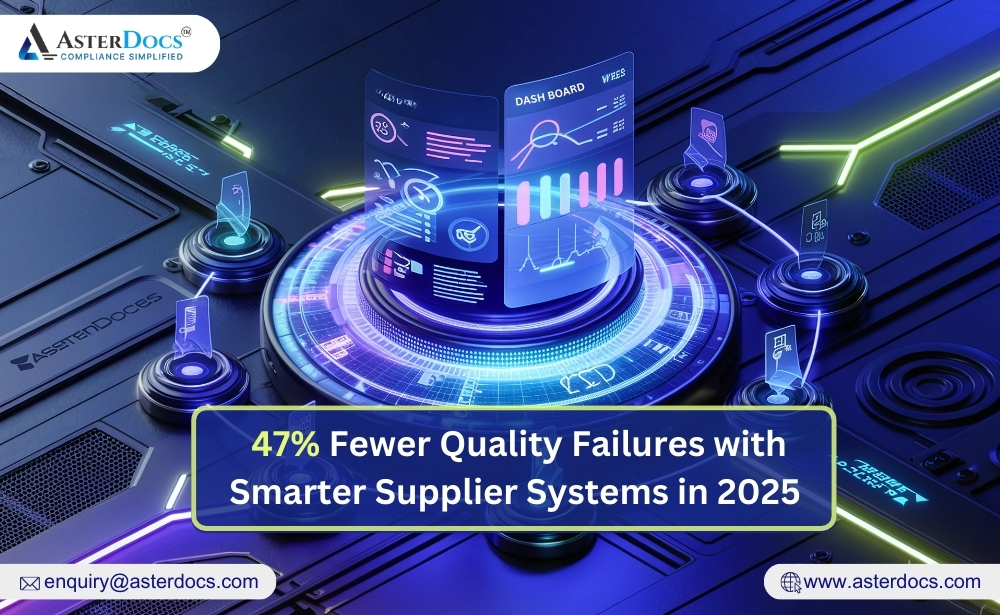In today’s global marketplace, ensuring product safety and regulation compliance is paramount for businesses across industries. The quality of products, their safety for consumers, and adherence to regulatory standards are non-negotiable aspects of any successful operation. Achieving and maintaining high product quality and compliance can be a complex and multifaceted challenge, particularly when dealing with a network of suppliers.
This is where Supplier Quality Assurance Software steps in as a game-changing solution. This blog will delve into Supplier Quality Assurance , explore its key benefits, and understand its pivotal role in enhancing product safety and compliance.
Understanding Supplier Quality Assurance Software
Supplier Quality Assurance Software, often called SQAS, is a comprehensive technology-driven solution designed to streamline and optimize various aspects of supplier quality management. It provides businesses with the tools and capabilities to ensure that the products sourced from suppliers meet predefined quality standards and comply with regulatory requirements.
The Role of Quality Assurance Software
- Quality Control: A robust quality control framework is at the heart of Quality Assurance Software. It enables businesses to define, communicate, and monitor supplier quality requirements. This includes product specifications, performance criteria, and testing protocols. By clearly articulating quality expectations, businesses set the stage for improved product safety and compliance.
- Supplier Evaluation: Supplier Quality Assurance Solutions facilitates the assessment of supplier capabilities and performance. It allows businesses to evaluate suppliers against predefined criteria, such as production capabilities, quality management systems, and past performance. This assessment helps in identifying reliable and compliant suppliers while flagging potential risks.
- Documentation and Compliance: Regulatory compliance is critical to product safety. These software enables businesses to maintain and manage compliance-related documentation, including certificates, test reports, and audits. It ensures that all necessary documentation is up-to-date and readily accessible.
- Real-Time Monitoring: Traditional methods of supplier quality management often lack real-time visibility. The software for quality assurance changes the game by providing real-time monitoring of supplier activities. This means that any deviations from quality standards or compliance requirements are detected promptly, allowing for timely corrective actions.
- Risk Management: Product safety and compliance entail risks. Supplier Quality Assurance supports risk assessment and management by identifying potential issues in the supply chain that could affect product quality or compliance. This proactive approach minimizes the chances of compliance breaches and product recalls.
Benefits of Supplier Quality Assurance Software
Now that we’ve explored the role of SQAS, let’s delve into the benefits it offers:
- Enhanced Product Safety: SQAS ensures that products sourced from suppliers consistently meet quality standards. This reduces the likelihood of product defects or safety issues that could harm consumers.
- Regulatory Compliance: Meeting regulatory requirements is crucial for businesses to avoid legal repercussions. SQAS helps companies maintain compliance by providing documentation, monitoring, and reporting tools.
- Reduced Risk: Through real-time monitoring and risk assessment, SQAS minimizes the risks associated with supplier quality and compliance. This proactive approach safeguards business interests and reputation.
- Improved Supplier Relations: Clear communication of quality expectations and a collaborative approach to compliance enhance supplier relationships. SQAS fosters transparency and cooperation with suppliers.
- Efficiency and Cost Savings: By automating many quality assurance tasks, SQAS improves efficiency and reduces operational costs associated with manual quality control and compliance management.
Implementing Supplier Quality Assurance Software
Implementing Quality Assurance Software’s involves several key steps:
- Assessment of Needs: Identify your specific quality and compliance needs. What are your industry’s critical quality standards, regulations, and product requirements?
- Supplier Evaluation: Evaluate your existing suppliers to determine their capabilities and performance. Identify areas where improvements are needed.
- Software Selection: Choose a Supplier Quality Assurance Software solution that aligns with your business needs and offers the features required for effective quality control and compliance management.
- Training: Train your team and suppliers on how to use the software effectively. Ensure that everyone understands the processes and expectations.
- Integration: Integrate supplier quality assurance with your existing systems, such as procurement and inventory management, to streamline data sharing and improve efficiency.
Conclusion
Supplier Quality Assurance Software is not just a tool; it’s a strategic asset for businesses aiming to enhance product safety and compliance. By effectively implementing , a solutions for supplier quality assurance companies can ensure that the products they source from suppliers meet quality standards, adhere to regulations, and safeguard their reputation and customer trust. In an increasingly competitive and regulated business environment, quality assurance software is the key to maintaining a competitive edge while ensuring the highest product safety and compliance standards.
Ready to take your product safety and compliance to the next level?
Explore how AsterDocs can benefit your business and empower you in streamlining Supplier Qualification.













